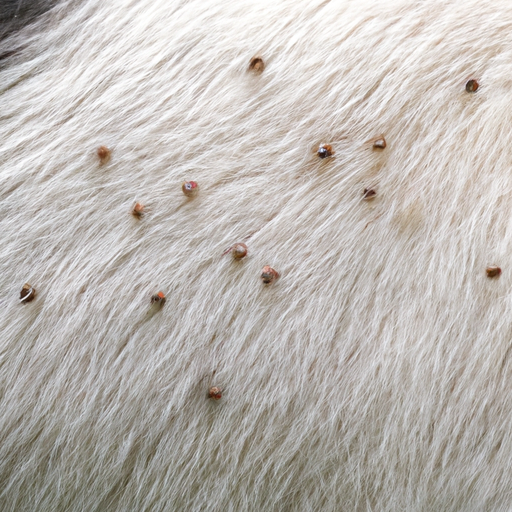“`markdown
What Do Flea Eggs Look Like on Dogs?
As a pet caretaker, one of your biggest concerns is probably ensuring your furry friend remains healthy and happy. When it comes to dogs, fleas are a common problem that can lead to various health issues if not addressed promptly.
H2: Identifying Flea Eggs on Your Dog
Flea eggs can be quite difficult to identify, especially if you’ve never encountered them before. They are tiny, about the size of a grain of sand, and have a whitish color. They can easily be mistaken for dandruff or dirt, especially on dogs with lighter fur.
However, unlike dandruff, flea eggs are not flaky. They are oval-shaped and smooth. When placed on a black background, their white or translucent color becomes more noticeable.
H2: The Life Cycle of Fleas
Understanding the life cycle of fleas can help you better tackle the problem. Here’s a brief overview:
- Eggs: Female fleas lay eggs on the host (your dog) which then fall off and land in the environment.
- Larvae: These eggs hatch into larvae, which feed on flea dirt and other organic matter.
- Pupa: The larvae then form cocoons and develop into pupae.
- Adult: Finally, the adult flea emerges from the cocoon and the cycle repeats.
H2: Where to Look for Flea Eggs on Your Dog
Flea eggs can be found anywhere on your dog, but there are certain areas where they’re more likely to be seen. These include:
- Around the neck
- In the armpits
- At the base of the tail
- On the belly
Use a fine-toothed comb to examine these areas thoroughly.
H2: Preventing and Treating Flea Infestations
Preventing flea infestations is always better than treating them. Here are some measures you can take:
- Regularly wash your dog’s bedding and vacuum your home to remove flea eggs and larvae.
- Use preventative flea treatments recommended by your vet.
- Keep your yard clean and free of debris where fleas can thrive.
Table 1. Flea Treatment Options:
| Treatment Type | Example | How It Works |
|---|---|---|
| Topical | Frontline, Advantage | Applied to the back of the dog’s neck, kills adult fleas. |
| Oral | NexGard, Bravecto | Administered orally, kills adult fleas. |
| Collars | Seresto | Worn around the neck, repels and kills fleas. |
Remember, if your dog already has fleas, consult your vet to develop a treatment plan.
H2: FAQ
Q: How long does it take for flea eggs to hatch?
A: Flea eggs typically hatch into larvae within 1-10 days.
Q: Can I see flea eggs with the naked eye?
A: Yes, but they are very small and can be difficult to spot.
Q: How often should I treat my dog for fleas?
A: It depends on the product you’re using. Some treatments are monthly, while others last for several months. Always follow the instructions.
Q: Can flea eggs live in my home?
A: Yes, flea eggs can fall off your dog and into your home environment, where they can continue the life cycle.
“`



